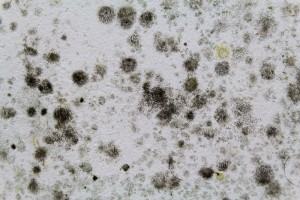
Black mold is dangerous, but when was this danger discovered?
Black mold, also known as Stachybotrys chartarum, has had a long history of making both people and animals sick. From fevers and fatigue to asthma and bleeding, this type of mold has been terrorizing people for thousands of years. But when was black mold first discovered? Well, let’s take a look at black mold throughout history.
Let’s Get Biblical
The first known reference to black mold actually appeared in the Bible. In the 14th chapter of Leviticus in the Old Testament, it states that if mold was discovered on a stone inside the house, the stone was removed and taken away from the city. Anyone who ate or lived in the house would then be required to bathe once the stone was removed. If there were several stones in the house, the house would be dismantled and every stone would be taken far from the city.
Eastern Europe
In more modern times, toxic black mold was first described at a Czech mycologist named Carl Joseph Corda in 1837. Corda found this mold growing inside of a home in Prague and wrote a detailed description of it as well as its particular likes to wallpaper, drywall, and any wet materials with gypsum. Although it was identified, black mold didn’t take center stage until the 1930s when it was discovered to be the cause of death for farm and barnyard animals. Horses, cows, and pigs began to get sick and die but the disease was strange and unknown. The symptoms of the animals included infection, immune system suppression, nervous system disorders, bleeding, and shock. Then in 1938, a Russian scientist determined that this sickness was due to black mold. This mold was growing on the hay and animal feed, which had become damp due to rain and condensation. This new disease was call “stachybotryotoxicosis”. The discovery of black mold in the 1930s jumpstarted this study and gave it recognition in modern history.
Human Infections
The first humans infected with stachybotryotoxicosis were in Russia in the 1940s. Many of those affected were farm workers who spent their days feeding infected animals and handling the animal feed and hay. These farm workers were soon experiencing many of the same symptoms as the animals including bleeding, skin irritation, asthma, fatigue, and fever.
The 1970s
Until the 1970s, mold was something that lived outside and was rarely found indoors. But after the energy crisis in the ‘70s, new building laws and codes were introduced that made it necessary for buildings to be airtight. Unfortunately, this also meant these buildings trapped air in them, causing mold. The use of cheaper construction materials like drywall, mold’s favorite snack, also encouraged mold to grow indoors.
Today, farms use a special binding agent to remove the mycotoxins and spores for farms but this mold continues to be a problem for homes. If you are experiencing this mold in your home, it is important to call us for a mold remediation service. For more information on our mold remediation service, call Environmental Consulting and Contracting Group today!
The History of Black Mold with Environmental Consulting and Contracting Group
If you or a family member suspects the presence of black mold or any other type of mold in your home, contact the professionals at Environmental Consulting and Contracting Group. With more than 30 years in the mold remediation industry, we have the experience and tools to help you. Contact us at 443-827-5264 or 1-877-591-MOLD (6653).
Be sure to follow us on Facebook, Twitter, and Pinterest!
Tags: Black Mold, mold knowledge

